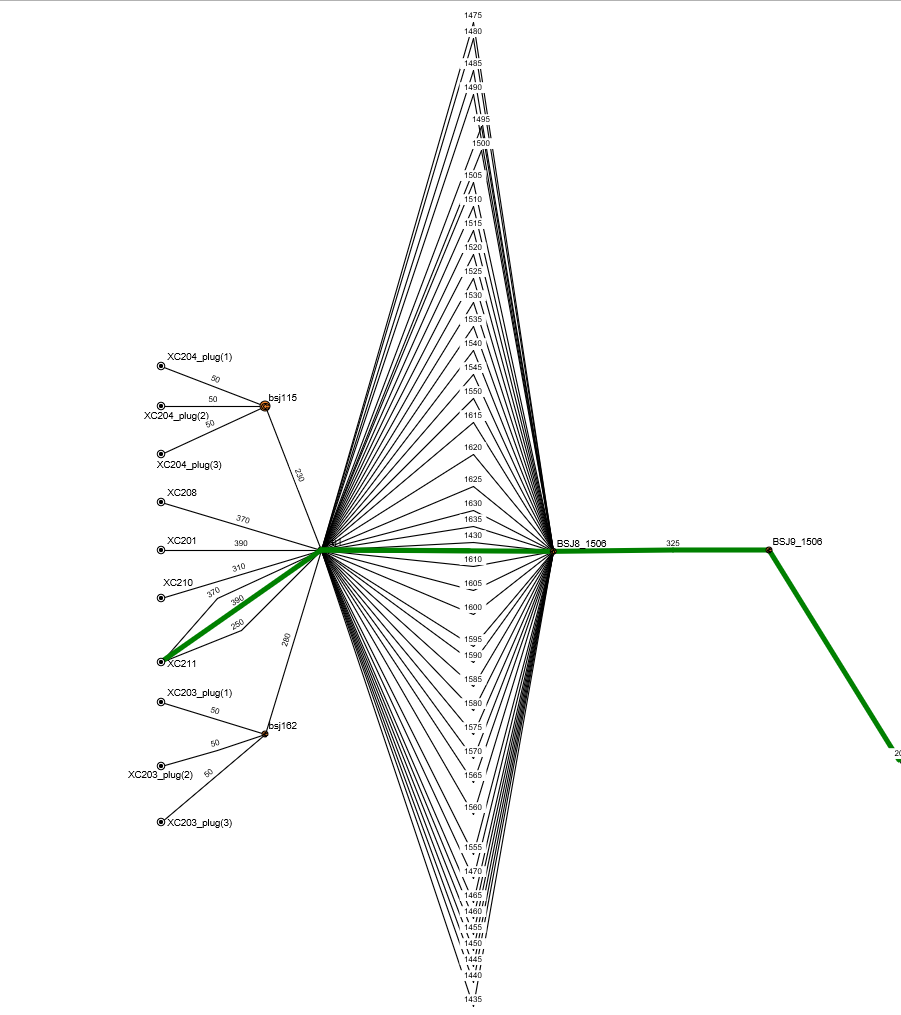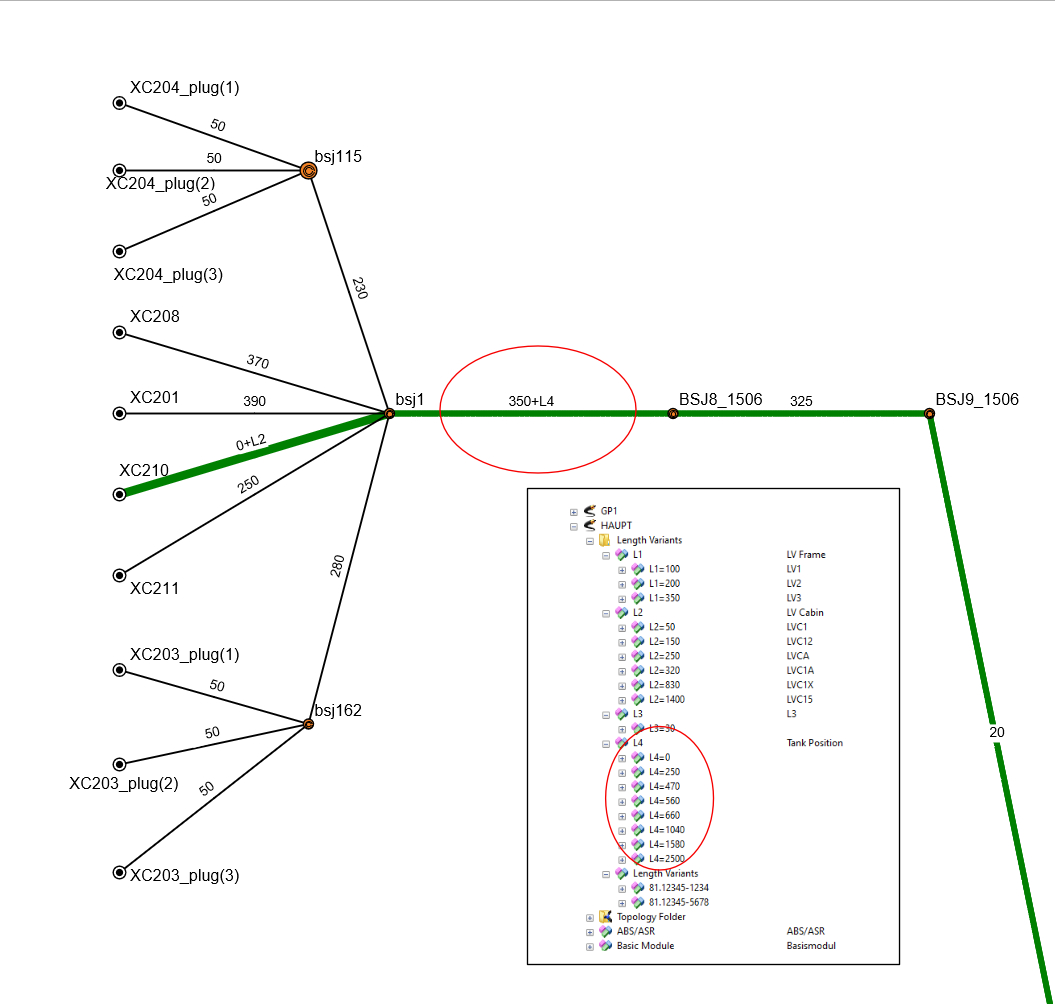Manufacturers of trucks, as a rule, think and plan for whole series. But of course, special equipment is also part of the day-to-day business here. And not only for infotainment, lighting equipment or the like, but also for different vehicle lengths and axle bases. As a result, cable and wire lengths also have to be planned and documented individually, and parts and cutting lists have to be adapted.
No more "higgledy-piggledy"
 The combinatorics of diverse wire length options for multiple vehicle variants results in error-prone confusion in graphically oriented tools.
The combinatorics of diverse wire length options for multiple vehicle variants results in error-prone confusion in graphically oriented tools. Even if the electrical equipment for a series of trucks with different lengths were largely the same, there would be a highly complex set of combinations, and this equipment would have to be represented for each geometric variant. In graphically oriented engineering tools, this complexity can hardly be represented, let alone understood. In order to be able to document length options at all, either all of them have to be drawn using parallel lines in a "higgledy-piggledy" fashion – or the entire cable set is documented separately, i.e. many times, for each individual variant. Both create confusion and provoke mistakes.
Intelligence creates clarity
 EB presents line segments in its 150% model only with their basic length and the possible options. When ordering, the appropriate option is selected and automatically documented.
EB presents line segments in its 150% model only with their basic length and the possible options. When ordering, the appropriate option is selected and automatically documented. AUCOTEC has created a uniquely clear solution for this in the Engineering Base (EB) platform for the on-board power supply and harness design. With EB's 150 % data model of a vehicle series, all length options can be represented graphically using only a single baseline, but this line has it all: it is not just a digitally "drawn" image, but the intelligent representation of the data model of the respective on-board power supply section. Therefore, EB's users can assign further, already predefined length options to the illustrated basic length of a certain cable segment. When it comes to the specific order, the appropriate option can then be selected simply by clicking.
Model with possibilities
EB's data model contains every feasible, i.e. approved different type, including correct relationships with "its" wires and connections. This variety of types with all length options is object-oriented in EB's database. The data can be evaluated at any time, for example in order to calculate the wire lengths of a cable set for each vehicle configuration "just" by clicking. And instead of the confusion of lines with different length designations that are hardly decipherable, EB offers all variants as sub-models that can be integrated into the overall concept in an instant. Engineering Base is thus advancing the digitization of on-board power supply and harness planning and enabling the full exploitation of this digitization potential.


